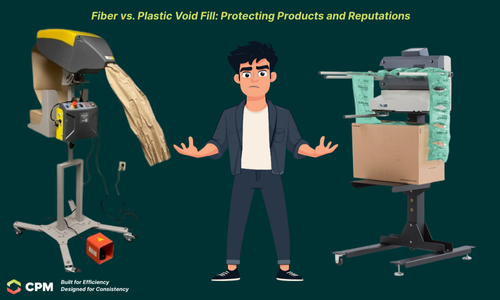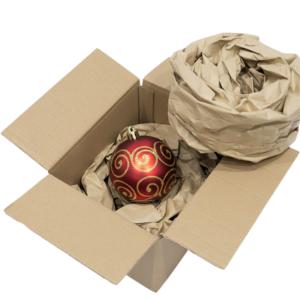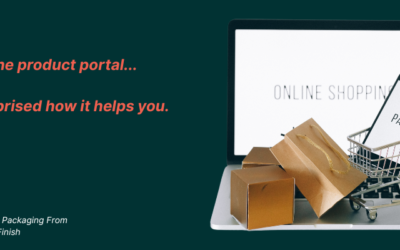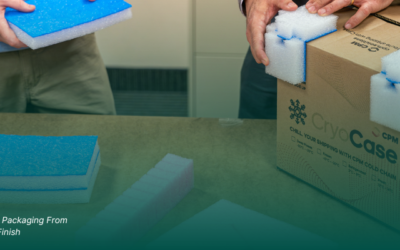
Brands are increasingly replacing plastic void fill with fiber-based alternatives to meet sustainability targets, improve product protection, and align with modern ESG standards. Fiber-based solutions not only deliver superior performance but also reinforce a brand’s commitment to protecting products—and the planet.
Performance Comparison at a Glance
|
Fiber-Based Void Fill |
Plastic Void Fill |
|
| Protection Performance | Superior cushioning; absorbs impact and vibration. Consistent protection across temperature ranges. | Prone to puncture, static charge buildup, and inconsistent fill at varying temperatures. |
| Sustainability & EPR Compliance | 100% curbside recyclable, compostable, and compliant with Extended Producer Responsibility (EPR) mandates. | Difficult to recycle, non-compostable, and contributes to landfill and microplastic pollution. |
| Cost Efficiency | Optimized for automation and compact storage; reduces waste and shipping volume for long-term savings. | Lightweight but less efficient in cube optimization; higher long-term costs due to inefficiencies. |
| Customer Experience | Delivers a premium unboxing feel aligned with sustainable brand values. | Perceived as cheap, outdated, and environmentally harmful. |
| Brand Impact | Reinforces protection and sustainability message; builds consumer trust and brand reputation. | Seen as non-compliant with ESG and sustainability expectations, risking brand image. |
Why Fiber Wins
Fiber-based void fill outperforms plastic across every critical metric. It provides superior cushioning that protects products through temperature fluctuations and rough handling, while plastic is prone to punctures and inconsistent performance.

From a sustainability perspective, fiber is 100% curbside recyclable and compostable, meeting expanding EPR mandates. With consumers increasingly aware of environmental issues—including growing concerns about microplastics and their health impacts—plastic alternatives face mounting scrutiny. Recent studies show that U.S. consumers perceive different forms of plastic packaging as the least sustainable option, with only 22-33% viewing it favorably compared to 60% for more sustainable alternatives.
Cost efficiency matters too. While plastic may seem cheaper upfront, fiber’s compact storage, automation compatibility, and reduced shipping volumes deliver better long-term value. Fewer damaged products mean lower return costs and happier customers.
The Brand Experience
Today’s consumers care deeply about sustainability, and packaging communicates your values. According to recent research, 90% of consumers are more likely to buy from brands with sustainable packaging, and 54% have consciously chosen products with sustainable packaging in recent months. Even more telling, 39% of consumers have switched to competing brands specifically because they offer sustainable packaging.
Fiber void fill creates a premium unboxing experience that aligns with modern brand expectations. Younger consumers are particularly engaged—59% of Millennials and 56% of Gen Z have actively sought products based on eco-friendly packaging. Meanwhile, plastic is increasingly perceived as outdated and environmentally harmful, with traditional plastics facing growing scrutiny over microplastic pollution and health concerns.
Making the Switch
Transitioning to fiber void fill is straightforward:
- Test fiber solutions with your product line
- Evaluate automation compatibility
- Calculate total cost of ownership
- Communicate the change to maximize brand value
Ready to Explore Fiber Void Fill Solutions?
Contact CPM to discuss how our eco-friendly packaging materials can protect your products and enhance your brand reputation.


